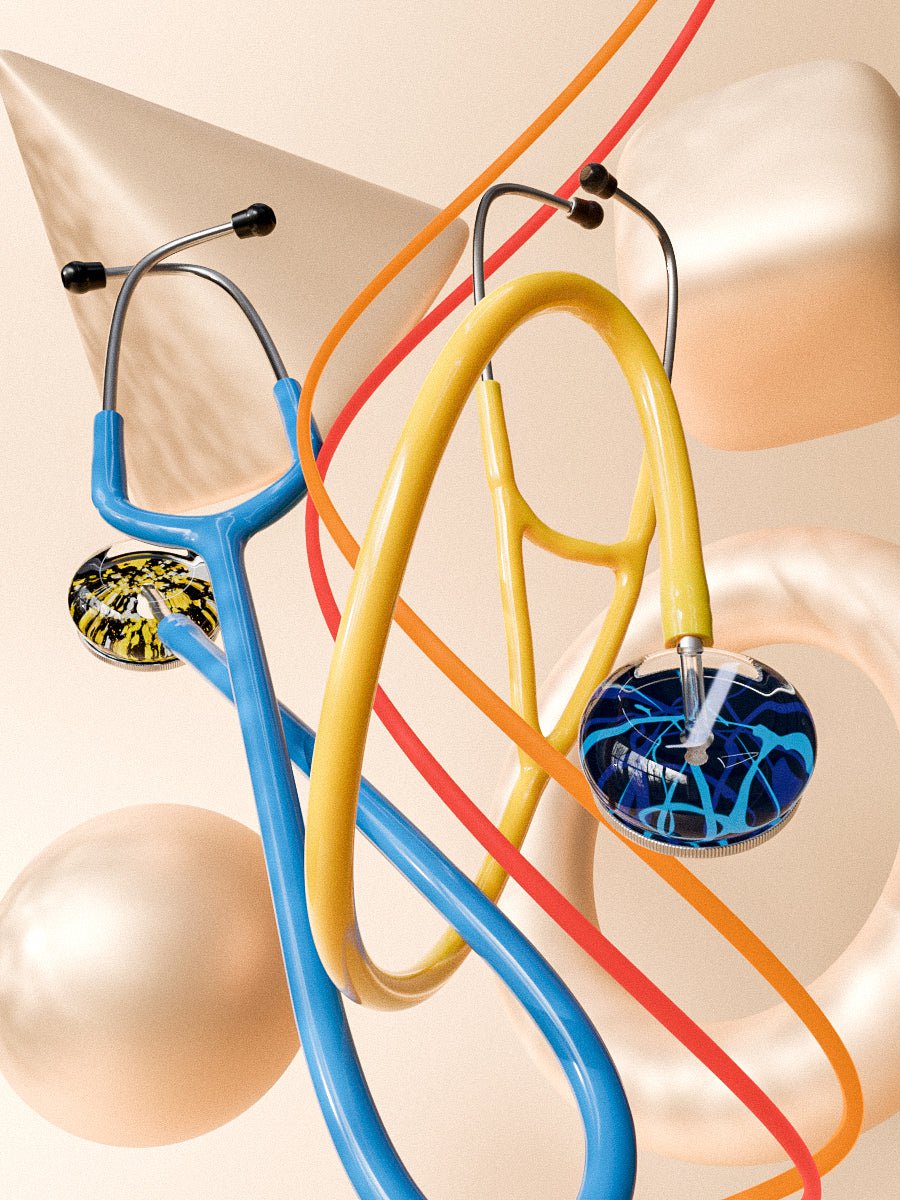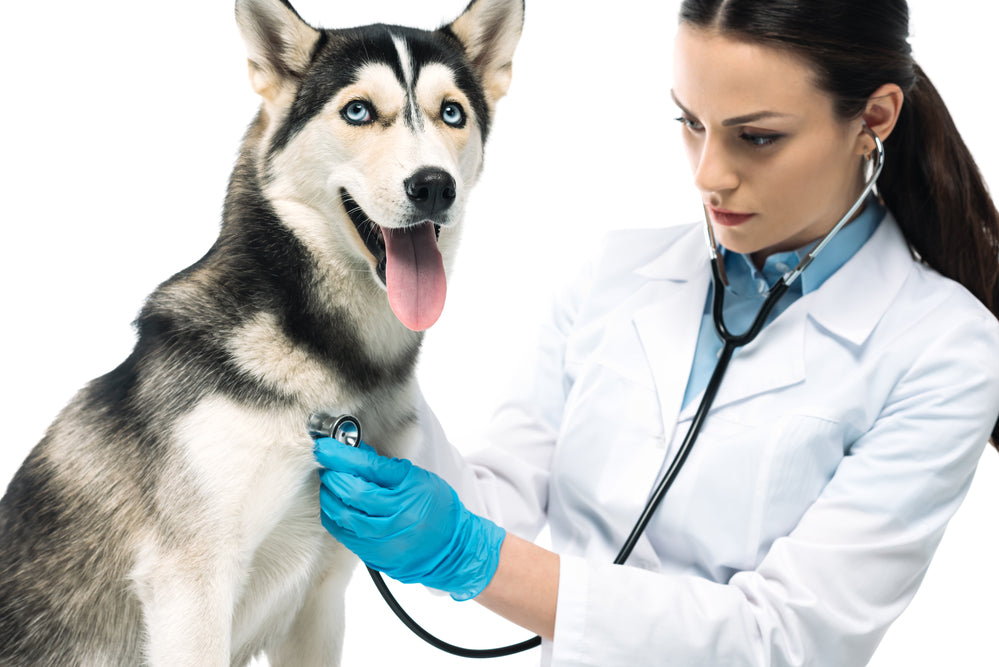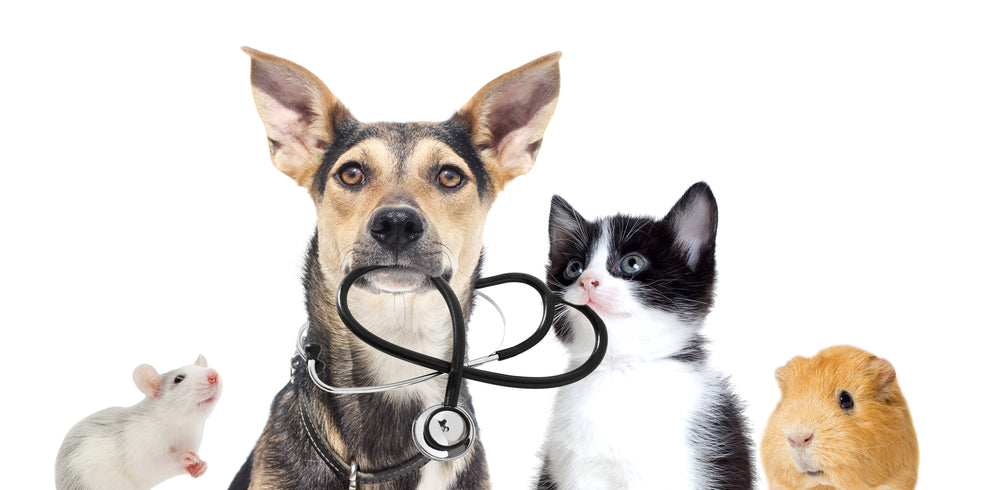Ever wonder if vets and doctors use the same kind of stethoscopes? Is there a difference between animal vs. human stethoscopes? The answer is yes! In this blog post, we'll talk about what veterinarians need to do when they are examining animals, how different species react differently to sound waves, and whether or not a veterinarian's stethoscope can be used for humans. Regardless of the type of stethoscope you are using, a common question is "Is it safe to engrave a stethoscope?' and the answer is yes. Your stethoscope is an investment in your career and we highly recommend engraving and personalizing your stethoscopes so they are as unique as possible.
What are the differences in stethoscopes for doctors vs. veterinarians?
- Doctors and veterinarians use different stethoscopes because they are examining different parts of the body. If you're a doctor or veterinarian, Ultrascopehas the stethoscopes that you need for your career.
- Veterinarians need an animal chest piece that can be used to listen for heart rates, lung sounds, bowel sounds etc., while doctors only need a human chest piece which is designed to detect abnormalities in breathing or subtle differences from one heartbeat to the next. If a veterinarian wants to listen for heart rates or lung sounds, they will need an additional stethoscope that can be used on humans like human pediatrician stethoscopes which are designed specifically for kids.
- Veterinarians usually have their own personal chest pieces and bells because they're constantly dealing with different species of animals and can't take the risk of cross-contamination.
- Doctors usually have a human chest piece that is designed to listen for abnormalities in breathing or subtle differences from one heartbeat to the next. There's also pediatric stethoscopes which are specifically made for children because their chests are much smaller than an adult so they need different sized tips.
- A veterinarian's chest piece should be compatible with any human stethoscope because it has the same function. Vets are trained to deal with all species and so they have no need for a pediatric or adult human stethoscope.
- Doctors may use different types of bells depending on what they're listening for but typically they have a diaphragm and bell.
- Vets typically only use the bell but they also might need to listen for different kinds of heart murmurs in animals versus humans, so some vets do use both pieces when necessary.
-Veterinarian stethoscopes also differ if the vet specializes in large animals. For example some of these stethoscopes come with a size 32" tubing due to working with extra large animals.
-Doctors tend to need more sensitive stethoscopes for hearing as they usually spend more time listening and using their hands while examining patients.
-The standard bell and diaphragm stethoscope is preferred by doctors for general use.
What is the cost of a stethoscope made specifically for veterinarians?
A veterinary specific scope can be as much or less expensive than one designed for humans. Some companies make different sized diaphragms and bells to fit dogs, cats, sheep, horses, cows and llamas. The price ranges from $150-$300
What is the cost of a stethoscope made specifically for humans?
The cost of a stethoscope can range from $30 to over $400
What is the difference between animals and humans?
It's best to use a scope designed for each. It will have features that are more sensitive or look different than an animal-specific one.
Doctors also tend to need more sensitive scopes because they're listening to the heart and lungs, as well as other organs like the stomach or bladder.
What should a veterinarian do if they are using an animal-specific scope on humans?
It's best not to use it for this purpose because there might be features that aren't sensitive enough for human ears. If you really need a stethoscope for humans, it's best to use one designed for that purpose.
Why are stethoscopes always cold to the touch of skin?
They are made from metal, which is more sensitive to cold and heat than other materials.
Different stethoscope tubes for humans and animals:
Doctors usually have two or three sets of tubes ( pediatric, adult, and large adults), whereas a veterinarian only needs one tube and it's usually much longer to assist with large animals.
In Conclusion:
When it comes to stethoscopes for veterinarians and doctors. The main objective of use is about the same. There are just many different factors that play into what the doctor or vet might need depending on the patient and their age and size. Different size tubes and individualized bells can suit different situations better than others. Doctors also usually tend to need stethoscopes that are more sensitive to hear heart lungs and organs. Both professions make good use of stethoscopes on a daily basis!





